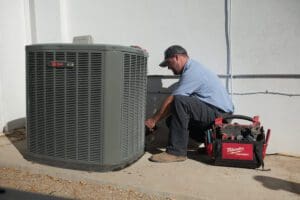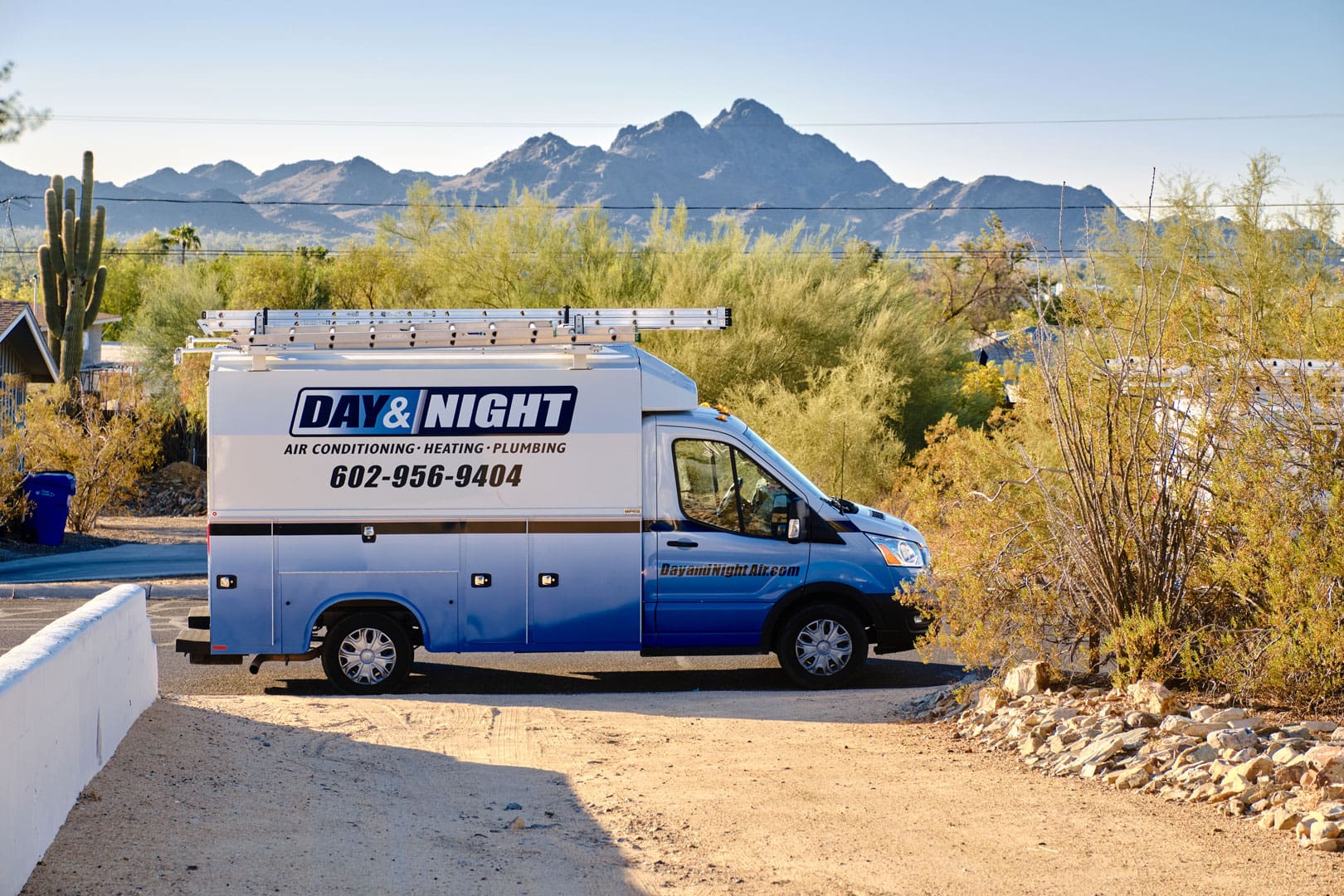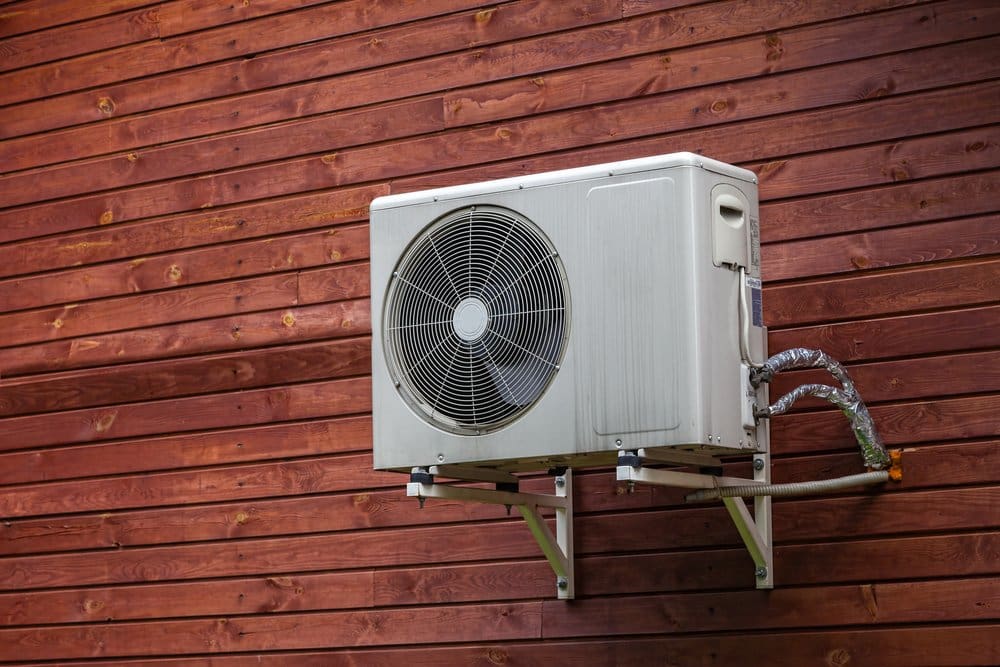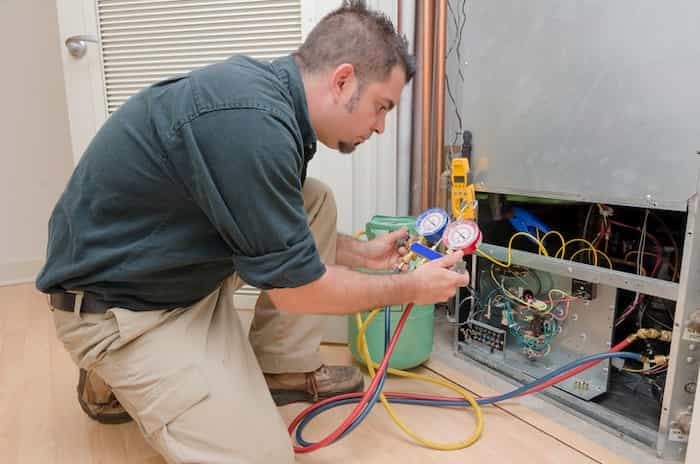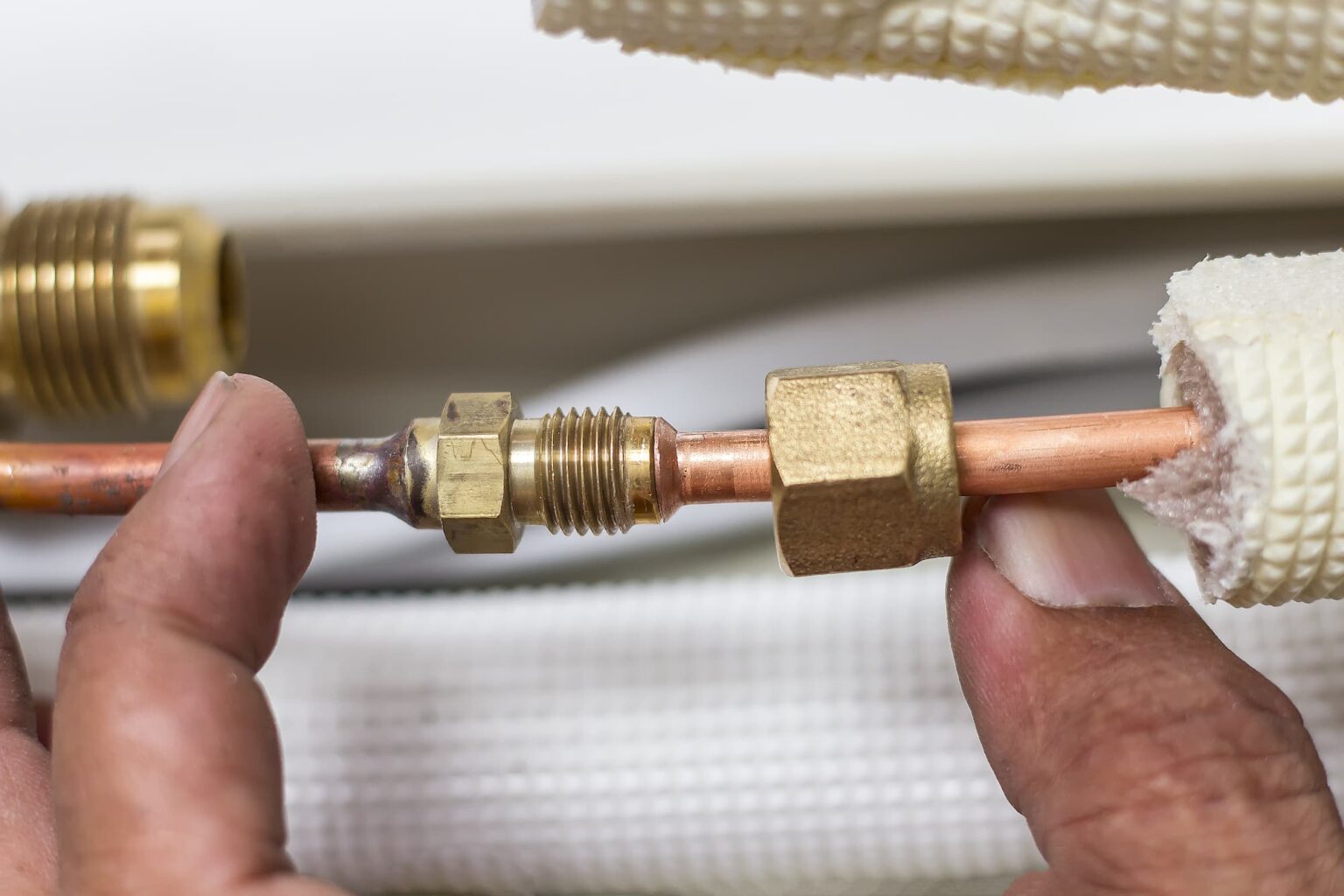The United States Department of Energy reports that one of the most critical components of maintaining a home central air conditioner is replacing filters regularly. However, before you can do that, you have to know where the AC filter is.
- Your filter may be inside an air return register or an air handler.
- If you need help locating and caring for your air filters, contact Day & Night Air Conditioning, Heating & Plumbing
What Is an Air Conditioner Air Filter?
An air conditioner air filter is a part of your home’s ac unit that usually sits inside the central return air vent. Its job is to capture debris in the air to keep it from getting back to the air handler. Most air filters are constructed from paper and cardboard, but more advanced materials such as fiberglass and polyester are common. As a general rule, the more expensive the air filter, the smaller the particles it can remove from the airflow.
In addition to keeping you and your family comfortable, your HVAC unit plays an essential role in improving the air quality in your home. A good filter is critical if someone in your home struggles with allergies or asthma aggravated by particles of dust, pollen, and pet dander. A high-quality air filter removes more of these irritants and keeps everyone in the household breathing easier.
How Do I Find the Air Filter Location?
In most homes’ central heating and air units, you can find the air filter in one of these two locations:
- The return air register is an opening in the ceiling or a wall where air first enters the system. The air filter serves as a gateway, sitting across the return air opening and capturing particles as they try to infiltrate the HVAC unit.
- The air filter may be part of an air handler, an indoor component of the system. The air handler usually sits in the attic or basement, where it cools the circulating air. Sometimes the air handler in the home is set inside a closet or crawl space as well. Inside the air handler, the air filter may be at the top, underside, or side. In some units, the air filter may sit in a small slot near the connection of the return duct and the blower fan. It may also be behind a service door on the back of the air handler. You may have to remove some screws to get to the air filter.
How Do I Inspect My Existing Air Filter?
Your air filters need regular inspections as part of your maintenance regimen. The system’s performance, how expensive it is to operate, and how long it lasts depend on how well you maintain it. The schedule may vary based on the climate where you live. Most experts suggest inspecting each air filter every month. Even if a filter carries a label about its expected lifespan, you may find that it doesn’t last that long.
When you’re changing your filter, watch for signs of these two common problems:
- If you see a heavy buildup of dust in the return air duct, you may have a leak in your system. Leaks are widespread; by some estimates, up to 30% of the air moving through a heating and cooling system gets lost to leaks. Also, leaks impact air quality, allowing even more dust, dirt, and impurities than usual to come into your home. This problem calls for professional attention. A trained technician can clean the ductwork and find and repair the leak through a process called duct sealing.
- If you see water around your air handler, it could signal one of three potential problems with your HVAC system:
- A frozen evaporator coil inside the air handler is melting into the drip pan and overflowing.
- A blocked condensate line is causing an overflow around the air handler.
- A drain pan is rusted and allows the water to pour out around the air handler.
Contact a professional if you see signs of either of these issues, as they can cause serious problems.
How Do I Determine What Size Replacement Filter to Get?
Over time, the AC filter inside your HVAC system gathers debris and will not pass and filter air as efficiently as when it was new. When that happens, it’s time for a replacement.
- The first thing you need is a new filter that is the correct size. The easiest way to figure out what size AC filter you need is to look on the side of the one you’re about to replace. Most manufacturers list the measurements of the filter there clearly. If you happen to have an AC filter with no sizing information on the filter, you can take the measurements yourself with a tape measure. You will need the length, width, and depth of the filter. Most standard filters are one inch thick.
- After you remove the old filter from the return air duct or air handler, take the opportunity to wipe down the area with a dust cloth.
- When you insert the new filter, please take note of the directional arrows to install it properly. The indicators tell you which way air comes into the system, so you want to be sure it’s oriented correctly.
Where Can I Learn More About Air Conditioner Air Filters?
For more than 42 years, Day & Night Air Conditioning, Heating & Plumbing has kept Arizona homes and businesses cool and comfortable when the temperatures start to rise. Our team of friendly and knowledgeable professionals is highly trained and up to date on the latest technology. More importantly, every member of our team focuses intently on our customers’ complete satisfaction.
If you have questions about your air conditioner filter, contact us at Day & Night Air Conditioning, Heating & Plumbing. We’re happy to answer all your questions and to help you find the filter in your unit. We offer a full line of products and services to keep your Phoenix, Arizona, home cool and comfortable all summer long. From installing a new HVAC unit to performing routine maintenance on the one you have, Day & Night Air Conditioning, Heating & Plumbing is here to help. We carry all the leading brands of heating and cooling systems.
Featured Image: David Spates/Shutterstock

